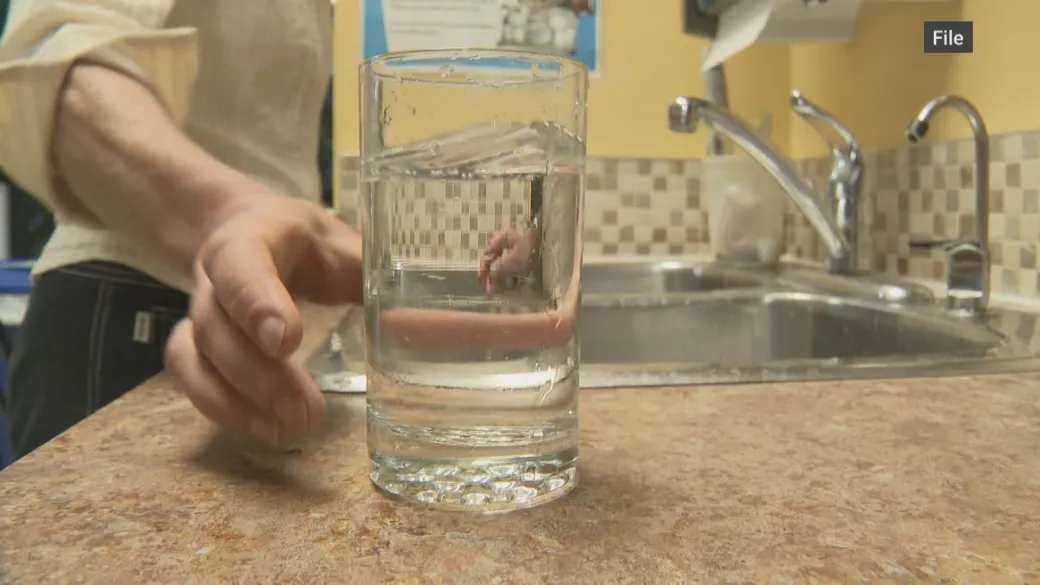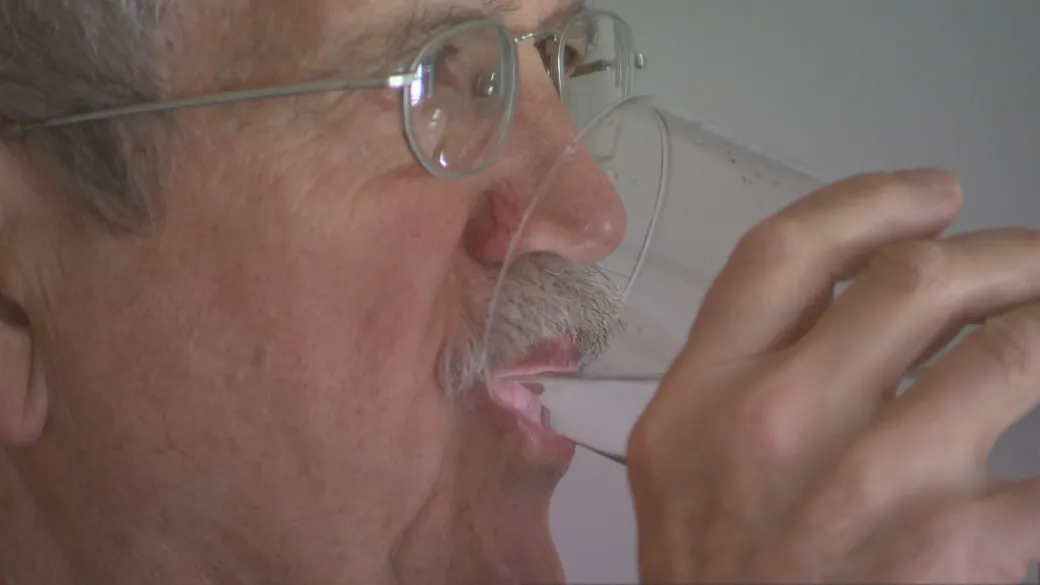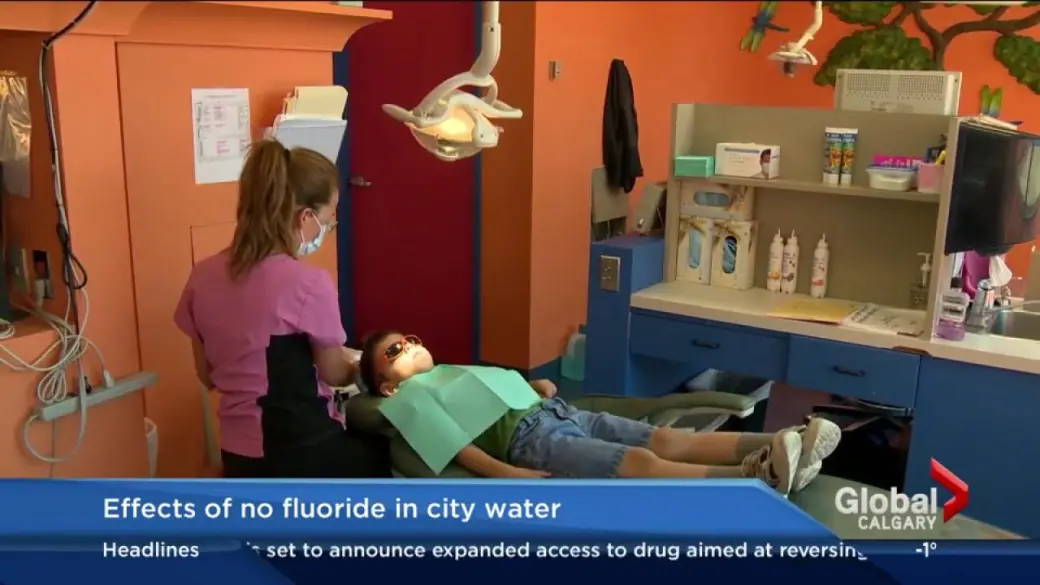
Donald Trump plans to push for the removal of fluoride from United States drinking water on his first day in office if elected, according to Robert F. Kennedy Jr.

On Saturday, former independent presidential candidate Kennedy took to X, claiming that fluoride is an “industrial waste” linked to arthritis, bone cancer, IQ loss and thyroid disease.
But experts are calling these claims unfounded, as fluoride has been added to drinking water and toothpaste for decades in the United States and Canada as a way to help reduce tooth decay and improve dental health, especially in communities with limited access to dental care.
“For someone to come out and say, ‘We’re going to ban community water fluoridation because it causes arthritis, bone fractures, bone cancer, neurodevelopmental disorders and thyroid problems’… nobody can say that carte blanche because there is no science to support that,” said Dr. Gerry Uswak, an associate professor of public health at the University of Saskatchewan.
While he believes it is important to research the health effects of fluoride in community water, he insists that such studies must be grounded in scientific evidence.
Kennedy, a well-known proponent of debunked health claims, also said that Trump has pledged to make him responsible for leading public health agencies in his administration if he wins a second term.

“On Jan. 20, the Trump White House will advise all U.S. water systems to remove fluoride from public water. Fluoride is an industrial waste associated with arthritis, bone fractures, bone cancer, IQ loss, neurodevelopmental disorders, and thyroid disease,” Kennedy stated in his post.
Trump told NBC News on Sunday that he had not spoken to Kennedy about fluoride yet, “but it sounds OK to me. You know it’s possible.”
Although it can be controversial, Dr. Aaron Burry, the CEO of the Canadian Dental Association, said there is so much misinformation that circulates about fluoride that this topic usually becomes a political issue right before an election.
“The benefit of it at the levels in Canada is that we see people’s oral health improve and reduces cavities in general in the population,” he said. It is only at high levels, and usually from naturally occurring sources like wells, where it can pose health risks.
Here’s what to know about fluoride in drinking water.
Fluoride is a naturally-occurring mineral and is commonly found in water, air, soil, plants and food, according to Health Canada.
“It leaches from the environment, there’s naturally fluoridated water supplies where the fluoride content is much higher than what is put into the community water system,” Uswak said.
And it can help strengthen teeth.
Fluoride molecules create stronger teeth by hardening tooth enamel, Health Canada said, contributing to tooth surface re-mineralization and deterring oral bacteria.
In the early 1900s, cavities were an “endemic” in the U.S., Uswak explained. However, researchers discovered a community in Colorado that seemed immune to this issue.
After investigating, they found the local water contained naturally occurring fluoride, which was strengthening teeth and preventing decay.
These findings eventually led to the decision to add fluoride to public water supplies as a way to prevent tooth decay. In the 1940s, it was added to the public drinking water in the U.S. and Canada.
The addition of low levels of fluoride to drinking water has long been considered one of the greatest public health achievements of the last century, according to the U.S. Centers for Disease Control and Prevention.
However, there are limits to how much can be added to water.

In Canada, the optimal level of fluoride in the water is 0.7 milligrams per litre (which can also be described as 0.7 parts per million), Health Canada stated. The optimal level takes into consideration the fluoride people are getting from other sources, like fluoridated toothpaste or mouth rinse.
“The Centers for Disease Control and Health Canada and various organized oral health agencies believe that in moderation, the amount that we’re using is safe,” Uswak said.
Health Canada stated that adding fluoride to drinking water is also, “the most cost-effective and equitable method to deliver fluoride to the population. This population-based preventive intervention contributes to oral health equity by overcoming common social determinants of health including age, education, income, and access to professional dental care.”
From a public health perspective, is it also associated with a 25-per cent reduction in tooth decay in children and adults, Health Canada added.
Fluoride intake has both beneficial effects, such as reducing the number of dental cavities, and negative effects in high doses, including the risk of tooth enamel and skeletal fluorosis from prolonged high exposure, according to the World Health Organization (WHO).
Such exposure may lead to dental fluorosis or crippling skeletal fluorosis, which is lined with osteosclerosis, calcification of tendons and ligaments, and bone deformities, the WHO stated.
Alberta Health says fluoride levels of 2.5 milligrams per litre or higher may increase the risk of skeletal fluorosis.
Dental fluorosis is a condition that changes the way your tooth enamel (the outer layer of your teeth) looks — small white spots appear on your adult teeth, Health Canada said.
Skeletal fluorosis, a condition involving the hardening of bones and joints, can occur when high levels of fluoride accumulate in the bones over many years. This condition is extremely rare in Canada, where fluoride levels in drinking water are carefully regulated and fluoride content in products is limited, Health Canada said.
“Since the 1940s, researchers have been testing the safety and benefits of fluoride. Apart from dental fluorosis and skeletal fluorosis, there are no other health effects related to fluoride,” Health Canada said.
In his post, Kennedy claimed that fluoride is linked to bone cancer; however, the WHO states that this claim is based solely on a study conducted on rats and has not been shown to apply to humans.
“Although administration of very high doses of fluoride to rats in a two-year cancer bioassay was associated with increased incidence of osteosarcoma, there is no evidence in recent and peer-reviewed publications that fluoride levels in drinking water aimed at controlling dental caries is associated with increased risk of bone cancers in humans,” the WHO said.
In August 2024, a report by the U.S. National Toxicology Program found that fluoride in drinking water at twice the recommended limit is linked with lower IQ in children. The report suggested drinking water containing more than 1.5 milligrams of fluoride per liter is consistently associated with lower IQs in kids.

However, the report did not conclude the risks of lower levels of fluoride, saying more study is needed. It also did not answer what high levels of fluoride might do to adults.
Burry emphasized that many studies linking high fluoride levels to adverse side effects often come from regions like Mexico and China, where there is a naturally high concentration of this mineral in the water supply.
“When you’re looking at studies from other countries, in particular, that are well above the 1.5 maximum part per million, these are largely going to be in water sources, which are not municipal water sources,” he said. “So that’s not what we have in Canada. So it’s really not looking at a reasonable comparative.”
Uswak stated that research continues to show that, in moderation, fluoride in water is safe and provides significant dental health benefits. However, he and Burry both emphasized the importance of continuing research into both the health benefits and potential drawbacks of fluoride.
“We have to give the correct information and diffuse the rhetoric, and it is our requirement to continue to research it to maintain its safety or make those changes if it is not,” he said.
If the U.S. removes fluoride from its water, Uswak said it’s hard to predict exactly how cavity rates will be affected, as results may vary across different populations. However, he believes that overall, cavity rates are likely to increase, especially in disadvantaged communities.
“If there is a community that is more disadvantaged and has low health literacy or dental care… it will be even higher for at-risk people,” he said.
He also pointed to the case of Calgary, which removed fluoride from its water in 2011 and subsequently saw a rise in cavity rates among the population.

In 2011, Calgary’s city council voted to remove fluoride from the city’s drinking water. Following this decision, studies conducted over the next several years observed an increase in cavity rates, especially among children.
In November of 2021, Calgary city council voted to approve the reintroduction of fluoride after a plebiscite was held that showed 62 per cent support for the mineral to be added to the drinking water in the city.
The city is still working on reintroducing fluoride back to its drinking water, citing infrastructure problems.
— with files from Global News’ Carolyn Kury de Castillo and the Associated Press